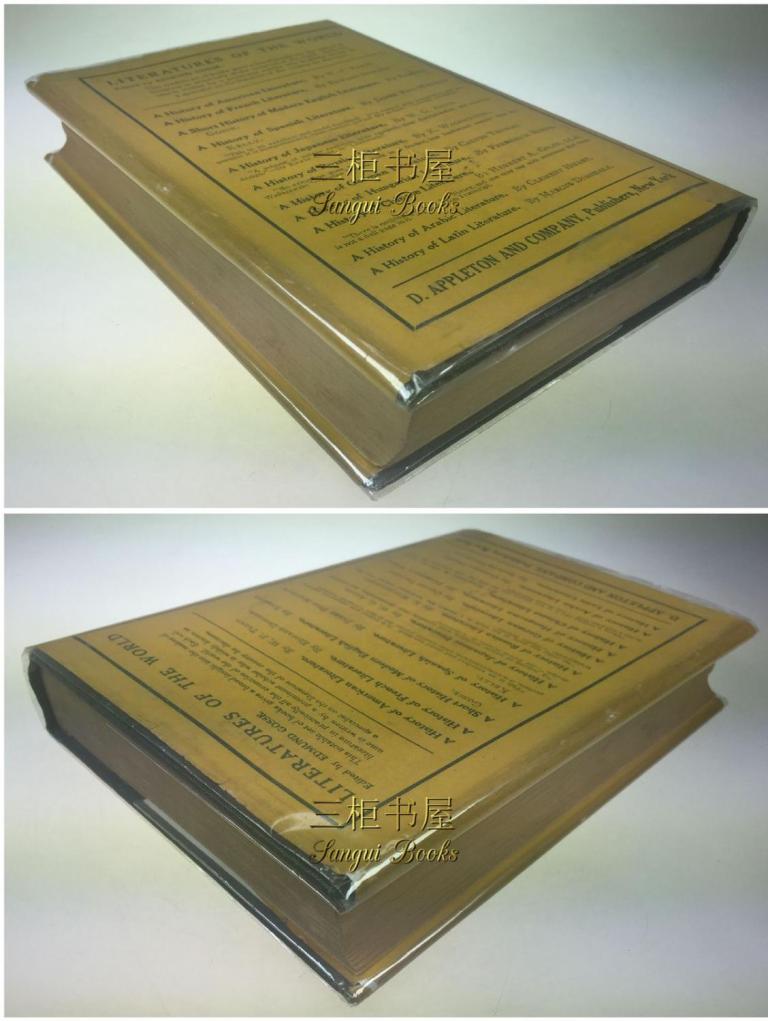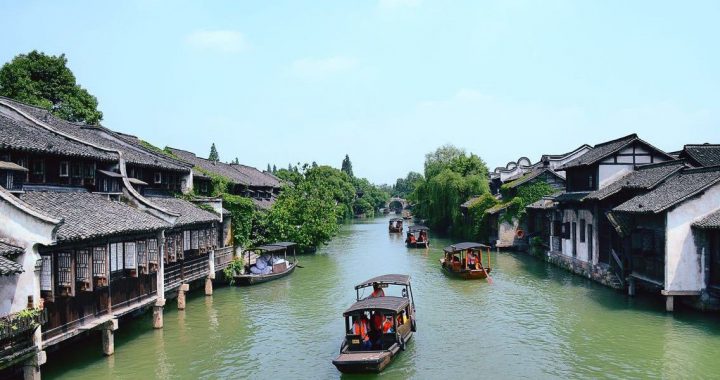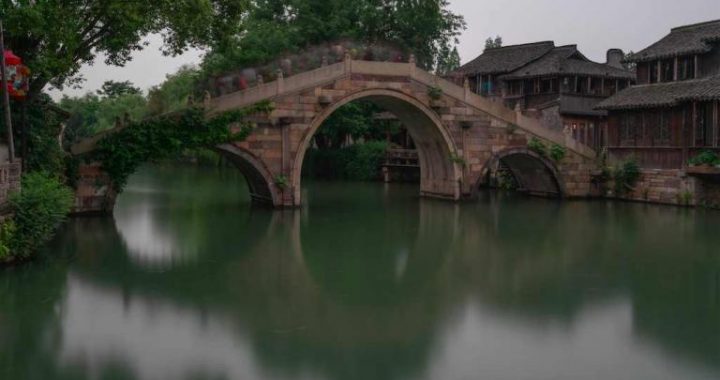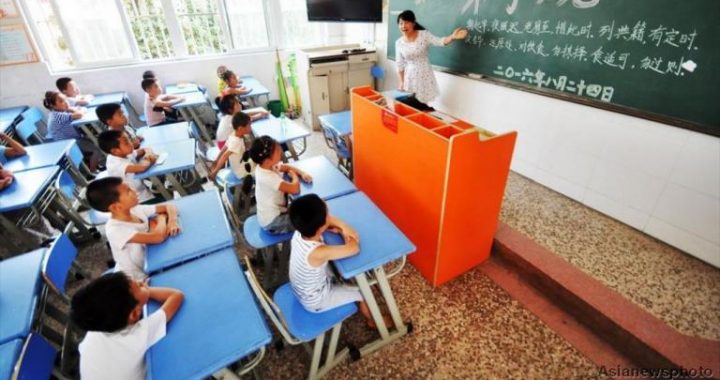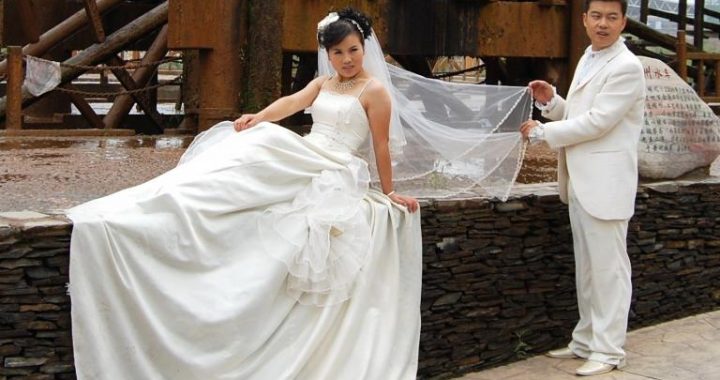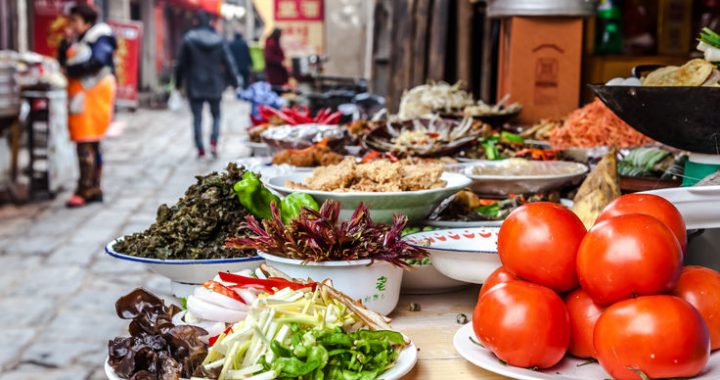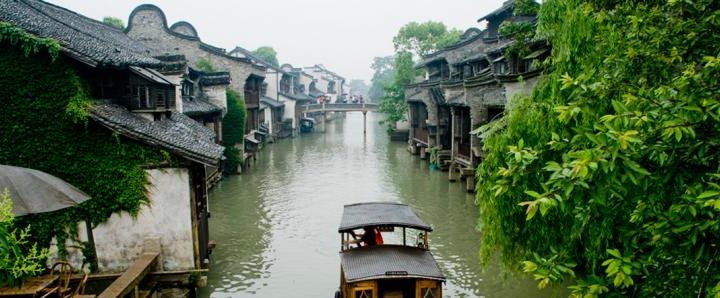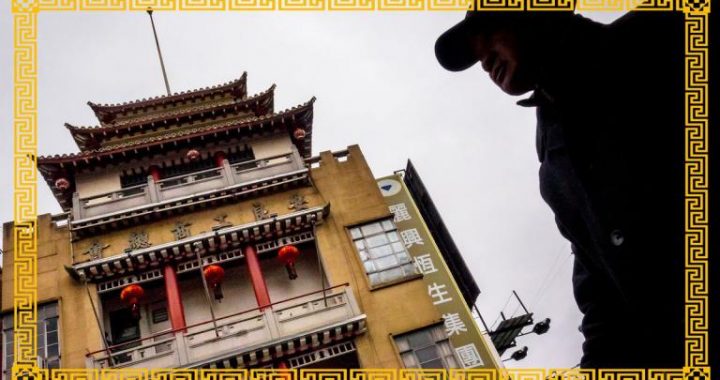Its Place in the History of Chinese Literature
44 min readIt is the immense age of Chinese literature that immediately strikes the Loutside observer, even if much about China is obviously so ancient.
Collections of songs or poems from 3,000 years ago are still enjoyed in modern times. The deciphered script on Shang oracle bones takes the written records of China still further back. Europe has no such venerable written records. Thesketches of the Chauvet Cave in the Ardeche, France, may be considerably older but, as a means of revealing detailed information on an ancient culture, they do not compare. Cambridge University prides itself in possessing what is probably the oldest above-ground artefact in England, the illuminated manuscript known as The Canterbury Gospels, but it dates merely to the year 597. The great age of Chinese culture is one reason why its literature is such a vast subject; the other is the early adoption of reverse-image moveable wood block printing.
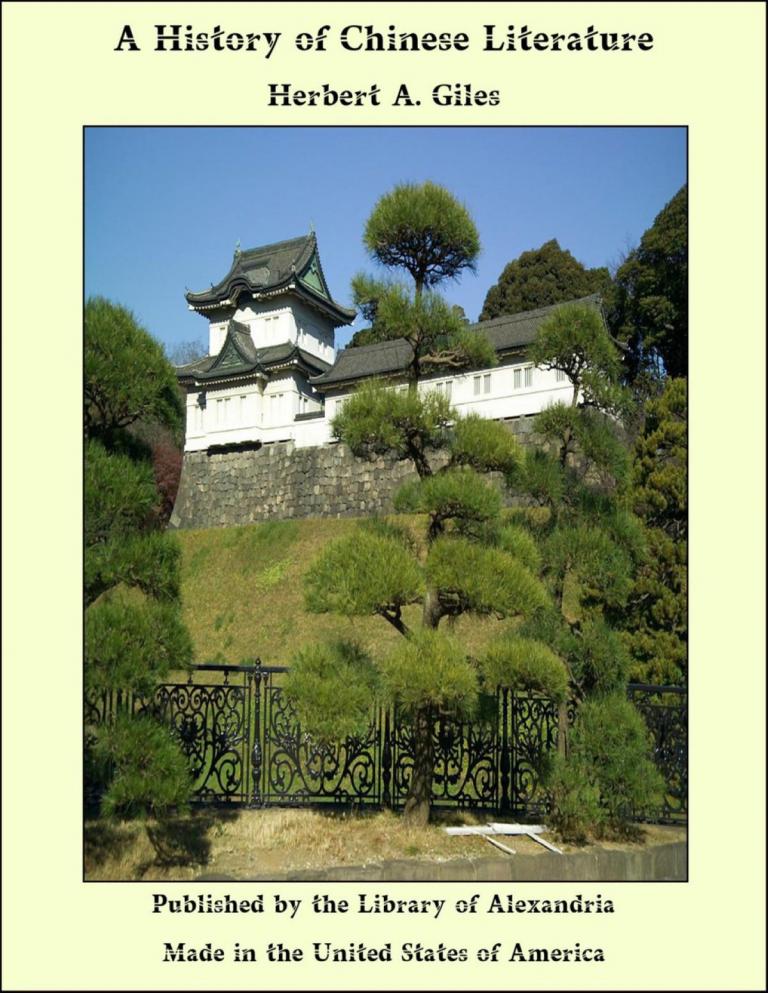
Its introduction in the eighth century led to an astonishing output of printed books.
Likewise the contribution from writers in areas near Wuzhen and from those in the town itself runs through many centuries. The town has long been a wealthy area with a benign climate; neither so benign, however, that the urge for energetic creativity is lost, nor so cold that survival must be the sole objective. Given peace, Wuzhen was an area of natural food surplus. Surpluses created wealth and fed cultural creativity. Material success therefore fed cultural
achievement. The town’s reputation for beauty, culture and plenty attracted retiring officials and successful merchants. Some of them built gardens, wrote poetry and crafted stories. This is the background to Wuzhen’s impressive record in literature.
Words best applied to literature-poetic, lyrical, beautiful-might even be those readily applied to this town. Its waterways, alleyways, timber-clad buildings, temples, and gardens were surely delightful for the visitors of every age. To those seeking to release their inner muse, the town must have been inspiring. How fitting that one of the Wuzhen bridges is named ‘ Reading in the Rain Bridge; the ghost of its Pingsbu Xiansheng, the storytellers, seems assured. How appropriate that the Chinese equivalent to the Nobel Prize for Literature, the Mao Dun Literature Prize, has long since been awarded in Wuzhen and is named after a son of the town.
Certainly music and painting were as revered as literature was in China but more literature has survived than those other art forms. To the Westerner’s eye it is astonishing that the world of the Zhou dynasty can be brought alive by the ancient Book of Songs. The poems within this anthology were written between the eleventh and ninth century BC. It is stunning that poems written so long ago can still charm two and half thousand years later. Ospreys mating for life are described in the poem below, which, even if they are apart between mating seasons, serve as an analogy for lovers.
Unrequited love is timeless. Other ancient poems tell of war, farming and feudal labour. One piece of verse from 3,000 years ago relates to a battle when the numerically superior Shang were defeated by the Zhou. It employs wonderfully explicit phrases:”The troops of [ Shang] were collected like a forest’and goes on to compare the successful Zhou general as an eagle on the wing.
The purpose of literature varied between East and West. Certainly Shakespeare’s writings turned history into propaganda damning without goodreason, for example, the Yorkist King of England in his play Richard IIl. For others such as Chaucer the motive was more to entertain through observationsof contemporary life. In China scholars both collected the work of others, and created their own literature in order to educate the emperor about the people’s past, customs and aspirations. Historical records were known as “Ya’, literally Court Hymns. The isolation of Chinas rulers from those they rule and their concerns has long been the biggest danger to a dynasty’s survival. Many of the best Chinese poets agonised over the state of the ordinary people. Educating their rulers was not usually a prime function of European literature.
The framework of Chinese society, when working near its best as from the Tang around 600 up to the Song around 1300, encouraged cultural achievement. Success, measured by advancing through the bureaucracy, was based first on passing exams and then on performance. Central to examinationsuccess had been the recital from memory of massive chunks of the Confucian Analects as well as from other literary giants. Past Chinese writers and philosophers have always held immense influence. There was then one final phase in the life path of these successful accomplished men. It was to write. Contributing to the body of literature was considered the most worthy of all retirement pastimes.
The most intellectually gifted amongst the Chinese, chosen through the Imperial Examinations system, advanced the furthest. These men became civil servants and rich. They frequently used their wealth to finance a long retirement.
Time and again there are examples of an imperial bureaucrat emerging from a chrysalis, spun perhaps by one of Wuzhen’s silkworms, to mutate during retirement into a gifted writer. Literature held a strong appeal. In an ephemeral world it offered the chance of a more permanent memorial stone than mere wealth alone could achieve. The search for such longer lasting fame is itself timeless;a twenty-first-century survey of the city of London’s overpaid youngplutocrats revealed that a surprisingly large number nursed the delusion that they would one day write novels; very few have done so. The transition from master of the financial universe to master of literature is thought deceptively easy. It is one, however, which the well-educated successful Chinese bureaucrat seemed able to achieve.
Despite the quantity of written material in China the tradition of Pinghua, the verbal tale, was strong. The philosophy of Confucius and also the Christian faith of Jesus Christ were recorded by disciples. This was similarly true for subsequent Chinese philosophers such as Mencius and Zhuangzi, although they wrote more than did Confucius. Both oral and verbal traditions in philosophy were strong, as indeed they were in parts of the West, for example through Nordic written and spoken sagas. Even in the fourteenth century Chaucer was writing about people telling stories. Chinese literature had to compete with this oral tradition.
Literature in China began early and competed well. The historian Sima Qian was a courtier at the Han court around 100 BC. He suffered much through court intrigue but still wrote Records of the Grand Historian which covered China’s history over the previous 2,000 years. He used events and behaviour from the past to draw moral conclusions, which have influenced Chinese scholars ever since. Copies of literary masterpieces from these times were rarely made, so that their survival is even more remarkable. Indeed the publicising of a work was achieved orally.A book launch then, and indeed now, often involved a recital or a talk at a festival. Sima Qian’s style of history retains influence even in twenty-first-century China. The novelist Yan Lianke in his book, The Explosion Chronicles, used a historiographic style derived from Sima Qian. His novel relates the story of a community which began during the Song dynasty and, as it moves into recent times, satires mercilessly modern Chinese society. This novel format may mock, while its ancient predecessor sought to mould behaviour through drawing attention to morality, but both use the same historical perspective to deliver their message.
Excepting Herodotus in Persia in the fifth century BC, the records of Chinese literature start much earlier than elsewhere. China has also retained more than has the West. There were many significant contributions during all periods following Sima Qian. The first recorded brush with literature at Wuzhen comes through Prince Zhaoming’s anthology of poetry collected around 500.
Zhaoming was the eldest son of the Liang Emperor Wu. By all accounts a decent man and devout Buddhist, he died aged thirty. He is survived, however, by aliterary compendium, the Wenxuan, which he compiled. Much of this work wascompleted under the tutelage of the Wuzhen sage, Shen Yue. Wuzhen was the prince’s sanctum. The main entrance to what became the Zhaoming Academy after his death is guarded by a stone archway on which is inscribed Relics of the Six Dynasties. The Six Dynasties is yet another term which refers to the times in which the prince lived. The building was one of the earliest constructs of the project to develop Wuzhen from 1999. It now contains a museum and library.
The Tang and Song were rich periods for literature, whose cultural wealth was reflected in the region of Wuzhen. The poets of that period lived in generally peaceful times in which the arts could foster. Theirs was a period of confidence and achievement. Modest men whose achievements enabled them in the words of Li Bai to drink alone under the moon’, but who understood that their fellow men, who were probably less fortunate, should not be forgotten. Literature’ sform of recording historical events interwoven with moral exhortations, as championed first by Sima Qian, changed around the 1200s when the Mongols, adopting the name of the Yuan dynasty, ruled China harshly.
The Mongols caused the Han Chinese much suffering. Morale suffered.
In China this was reflected in a new style of literature which diverted and entertained more. Theatre, strangely popular although a previously unknown art form to the Yuan dynasty, also prospered in part for the same reasons.
Perhaps Chaucer is again relevant in this context as one of the earliest to write entertainingly in English, seeking a wider audience beyond those familiar with Latin and Greek. The period of the Yuan,1206-1368, was when novels rather than histories influenced the Chinese culture widely. It is the time when the region around Wuzhen first played a significant role in the country’s literary heritage.
The Kingdom of Chu, which survived for 1000 years up to the unificationof China around 200 BC, was a powerful coastal state extending from the southern boundary of Shandong province in the north to Shanghai. The Yangtze River delta was at its core. This was the period of Warring States so perhaps it is fitting that its best-known poet, Qu Yuan, was also a statesman. Poetry wasnot yet a recognised profession. Chu had conquered the states of Wu and Yue, although its later fall to the aggressive Qin state led to Chinas first unification.
Qu Yuan wrote epic poems as well as those which were naturalistic. He was inspired by the steep forested mountains full of ravines sheltering raging streams which lie close to Wuzhen. The charm of Wuzhen, as one of a number of water towns in the region, might have inspired this poet directly. When Qu Yuan was exiled around 260 BC it was these lands just south of the Yangtze around Wuzhen in which he chose to live. It is recorded he travelled the countryside seeking inspiration for his naturalistic poetry. The power of nature even influenced calligraphy as the dominant style at the time was known as the style of”Birds and Worms’; it had been borrowed from the smaller state of Yue to which Wuzhen had hitherto belonged. Many paintings from the period displayed vivid depictions of typical local wildlife. Qu himself is remembered best for his Chu Ci anthology, the Songs of Chu, which stands as one of the great collections of southern Chinese verse. Qu’s most famous poem written in difficult times is called ‘ Encountering Sorrow’, in which he laments that his own purity and honour are wasted in a corrupt world. Its length -373 lines justify its inclusion in the epic’ category.
When Qu Yuan was exiled from court he travelled the countryside in what now constitutes northern Zhejiang province. Since water was the most common form of transport, he most probably passed by Wuzhen, perhaps using the modest predecessor of the Grand Canal. Sima Qian dated parts of the canal’s construction to the fourth century BC. Qu Yuan wrote another poem of lamentation when his state, Chu, was conquered by the Qin in 278 BC. In despair at the savagery of his times Qu Yuan committed suicide in the River Miluo in Hubei province, which lies to the southwest of Wuzhen.
Commemoration of his death is the second reason for which Qu Yuan is known. The modern-day Dragon Boat Race, now even celebrated on the River Cam in Cambridge, England, commemorates the injustice born by the demoralised Qu. Boats now travel noisily up the river to the rhythm of drums commemorating this poet and disturbing the fish which are thereby denied the sustenance from consuming his body. Evil spirits are kept away by lumps of rice wrapped in silk, zongzi, whose modern specification is now generally amended to a cheaper leaf wrapping.
Xie Lingyun, also known as the Duke of Kangle, is another poet from theearly 400s whose childhood was spent between Wuzhen and Hangzhou in a place known as Qiantong. The troubles of the period led to the duke’s exile in the Zhejiang countryside and his eventual execution through palace intrigue.
His poetry is about nature and landscape of the Wuzhen region, an early example of the naturalist school of literature which was so different to Sima Qian’s. His best-known poem is Shanju Fu, Dwelling in the Mountains. Another of the greatest poets between the Han and the Tang periods was Tao Yuanming from the early 400s. He merits mention not just for his writing but because he lived in southern Jiangxi province, close to Suzhou and Wuzhen. These were the early centuries of Chinas story when the shape of Chinese literature was forming. The educated of Wuzhen would have been as aware of the work of contemporary leading writers, as their twenty-first-century descendants are aware of their heroic sportsmen. Tao Yuanming was the child ofan eminent general and governor. Appalled by the corruption of the Jin dynasty court, he refused in his own words to ‘ bow like a servant for five bushels of grain’, which became a well-used Chinese phrase to describe those who would, or would not, compromise. He withdrew from court to mix farming, despite Confucian low regard for such manual labour, with writing poetry. Withdrawal from society became an important aspect of Chinese literati behaviour.
He wished to work in front of one of the small courtyards seen in Wuzhen where peach and pear trees spread before the hall’. The titles of his best-known works areThe Peach Blossom Springs,’I Had Better Return’, and ‘ Imagining an Imaginary Ideal World’. He was a rhapsodist of the natural world who would have approved of the line penned 1,500 years later by the English Anglo-Catholic Christian poet Gerard Manley Hopkins ‘ Glory Be to God for Dappled Things’. The poet, as a recluse devoted to nature, and also gardening, was another ancient strand of poetry to place alongside that of the historic approach developed by Sima Qian. Tao Yuanming would have been known as a scholar through the long gown he wore. The manual workers of Wuzhen dressed in short jackets.
Romance, as well as history and nature, was later used as a base for poetry.
In the early 700s the work of Li Bai became one of the pillars on which Chinese poetry rests. Remarkably over a thousand of his poems have survived. It is thought, though unproven, that he died on the Yangtze, the river running near Wuzhen, reaching from his boat to embrace the moon’s reflection. Such an image is certainly something about which he might have written. His poemsglorified drunkenness, to which perhaps his drowning was not unconnected.
Drinking wine was often associated with classical poetry,a connection whichwas considered neither unhealthy nor immoral. To judge from his poem ‘ Waking from Drunkenness on a Spring Day, he evidently had direct experience of alcohol.
The theme of drink as a muse is a constant in Chinese poetry; it was evidently an inspiration for Li Qingzhao,a poet from Shandong during the early 1100s. Her idyllic early life with a loved husband was turned upside down by the Jurchen invasion of North China. She fled southwards to the area of Hangzhou, perhaps or perhaps not, she came to Wuzhen. She reminisces, in a manner which touches sensibilities 1,000 years later, in her poem Rumengling(or Like a Dream):
I ofen remember that sunset at Creek Pavilion Too drunk to know our way bome Tiurning the boat around gfier a joyous day Weblundered deeper into lotus way Punt auway! Punt away!
We drove wp a beacbfiul of bherons and gulls.
The theme of withdrawal was continued through another poet and friend of Li Bai, Du Fu. Together they are rated amongst the most outstanding of Chinese poets. Though from the province of Henan, northwest of Zhejiang, records prove that he entered a poetry contest in the Jiangsu and Zhejiang areain the early 730s. Tantalisingly the sponsor and exact location of the event are unknown. However, this is precisely the area in which Wuzhen is placed. The town hosts cultural festivals in the twenty-first century; perhaps it did so in the eighth century.
Du Fu chose at first not to seek work in the civil service. Caught up in the unrest of the An Lushan rebellion against the Tang during the 750s, he eventually found work as an education official in the south. The poet must have been ill-suited to his bureaucratic job. Two lines of his poetry written 1,300 years ago will connect directly to many in the twenty-first century overburdened with paperwork or email.
I am about to scream madly in my office Especially when they bring more papers to pile bigher on my desk.
It was historians such as Sima Qian who first proposed the historical philosophical view of the 500-year cycle. Thus it was history of 500 years ago that was most relevant to the present. The tangential 500-year-old period was worthy of study to understand better the present. Intriguingly some in the West propose a similar theory of repetition over a 500-year cycle. Hence the Brexit of the twenty-first century was foreshadowed by the ‘ Brexit’ which occurred when England left the continental Catholic Church in the 1500s. So too the union of England to continental Europe which followed the defeat of the Anglo-Saxons in 1066 relates to its release from the European continent which theReformation secured 500 years later. Sima Qian would not have been surprised by these synchronised connections in the West.
In the 700s and 800s many of the well-known poets, such as Wang Wei, Meng Haoran, Li He, Li Shangyin, Du Mu and Bai Juyi, came from the north.
One at least used props, such as the silk worm, for their work which came from the region of silk production around Wuzhen. Perhaps thinking of the double silkworm cocoon where the worms spin silk thread until the end of their lives, Li Shangyin wrote’ Spring silkworm till its death spins silk from lovesick heart’.
The double silkworm produces some of the best and strongest silk which is used for the marriage bed quilt. Others of Li’s lines are also memorable:’ Candles only when burned have no tears to shed’,’ Having no wings,I can’t fly to you as I please’ or in a line which might still be used by lovers’ Our hearts as one, your ears can hear my inner call’.
Du Mu worked as a Tang government official in Huzhou, which, like Wuzhen, was in the centre of the Yangtze River cultural area. His poem Mourning Dayremains well known. One verse reads: A driszeling rain fals like tears on the Mourning Day; The mourner’s beart is going to break on bhis way.
Where can a wine shop be found to drown bis sad hours?
A cowherd points to a villasge toru’ apricot flowers far awa.
Tang poets were extraordinarily gifted, numerous and diverse. The copies of the works of these ancient poets partly survived through being written in vertical lines on bamboo strips sewn together; the orientation of written lines changed, like so much else, after 1949, although a vertical axis was sensibly retained for the spines of books. Traditionally orientated Chinese script on the book spine means the neck of someone searching in a Chinese library, unlike that the twisted one of the Western bibliophile, does not suffer.
From the earliest times bamboo, that most versatile and serviceable of woods, was predominantly used for writers in lengths which measure that of the typical chopstick; their width was double of that instrument. Other timbers were occasionally used, as was silk, although this material proved too expensive.
The earliest literary treasures of the West were written on papyrus; infinitely less durable than bamboo. Western links to the culture of Rome and Athens might have been lost without the development of vellum, animal skin, around 500, on which Europeans could write and bind together to make a codex.
Access to bamboo and the development of paper around 100 BC and AD 100 meant that vellum was rarely made in China. Ink, generally made from animal glue mixed with carbon black, and bamboo were cheap and readily available in China. This helped spread knowledge of literature and generated interest in the work of writers. The Chinese situation contrasts with that of Europe, where illuminated manuscripts, made from sheets of vellum, were so expensive that their distribution was exclusively amongst the rich and the educated religious hierarchy. Gutenberg’s press, moveable block printing, and the availability of paper eventually had the same impact in the West on literacy that the ready supplies of bamboo and ink had had long before in China.
Different technologies and access to suitable materials affected literacy levels. All such ancient historic figures concerning literacy can obviously be challenged but it would seem, that during the rule of the Tang, five per cent of the seventy million or so population were literate albeit the figure was heavily skewed towards the male. This was a time when England had only a few thousand literate clerics writing and reading books in a language, Latin, unintelligible to almost all but the church hierarchy itself. The English aristocracy, displaying a consistency which endures up to the twenty-first century, generally lacked much cultural awareness. They were more interested in developing the muscles in their sword arm than the synapses of their brain.
The Chinese early focus on merit to determine individual success can in part be attributed to the ready access to writing materials and comparatively high levels of literacy. The literate framework which China was establishing two thousand years ago only began to be replicated in England after the 1500s. Western governments, and in particular that of England, instinctively feared literacy.
In China literacy was embraced; it was only the eunuchs who were sometimes prevented from achieving literacy.
Although literacy played a parallel role in uniting both European states and China, there was one significant variance. The educated in each countryof Europe were united through the language of the Christian Church, Latin.
It was of little matter that the languages spoken within European states were unintelligible outside their own small area as the elite of every country could write and speak to each other in Latin. Europe was united by the language ofLatin and the culture of Rome. Its educated elite shared the same values and often knew more about their peers in a foreign country that they did about the poor who worked near them. Latin, not English, was the language of Cambridge University, and of every other European university, for centuries. In China, Hanzi, the characters of written Chinese, played the same role; however, there was no widely shared spoken language amongst the educated which could compare with the reach of Latin in Europe.
After the Tang, during the Song, literacy may have risen to between twenty and thirty per cent, with women far more empowered and literate thanhitherto. Literacy in England in 1500 was less than ten per cent. During theQing period of the late 1800s it would appear literacy had dropped back to around twenty per cent, with very few women at all being able to read. If such figures are correct, it suggests that for almost 900 years after the Song, progress towards mass literacy was slight and probably even negative. Levels of culture, as happened after the Romans left England around 400, can certainly retreat in any society. The dilemma of declining literacy was one of the many aspects of Chinese culture which the Cambridge-educated Englishman Joseph Needhamaddressed in his volume on’ Printing and Paper’ within his ‘ Science and Civilisation’ series.
Wuzhen yields no records of a commercial printing press, bookshops or newspapers. It is, however, near certain that its location within this rich and beautiful portion of China literacy would have been high. If the rate was five percent during the Tang for all China, then it would have been higher in Wuzhen; likewise with the national estimate when the Song ruled of twenty to thirty per cent. The Northern Song had a population of around 100 million, which had doubled by the time of the Ming in the mid-1300s. Thirty per cent of these figures constitute a vast number of literate people.
There is further evidence of the existence of these legions of readers within the Imperial Examinations records. Possibly ten per cent of the population completed these state examinations in the Song period. These exams demandedthe highest levels of literacy. People studied privately and graduated from academies such as that of Zhaoming in Wuzhen, They were then confronted by these fiendishly difficult exams. To the exclamation how could the government bureaucracy possibly have found employment for them all, it must be remembered that many failed. Furthermore, many would only have passed the lowest level of examination and might not have found a job or only a modest one. The modern age is not the first to experience a surfeit of ‘ graduates’ unable to find suitable employment. Disappointed and frustrated failures of the exam sometimes caused social unrest, the most extreme example being Hong Xiuquan, the leader of the Taiping Rebellion of the 1850s. He failed the imperial exams four times.
Another nudge for literacy must have come from the Mandarin script itself.
The great English scribe Samuel Johnson denigrated a civilisation which relied on pictograms and could not deploy an alphabet or the equivalent in support of its culture. However, the dependence of Chinese culture on its pictograms has had diverse and positive impacts. New elegant styles of handwriting each with an elegant flourish of their own were expected from every dynastic leader, from ancient times to modern. It was almost a criterion by which an emperor was judged.
The writing of Mao Zedong, for example, continues to command great admiration. There has always been an interest in writing style, the charm of which is difficult to share by a Western admirer of Chinese culture if there is no commensurate knowledge of China’s written language. Chinese calligraphy is admired as an art form itself, as the numerous calligraphy museums in China attest. Even paintings are usually adorned with a number of Mandarin characters. Chinese people would have seen the benefits of literacy. They would have wanted to read what the famous painter had written alongside his work, what their neighbour had carved on their door lintel and to understand that the choice of the Zhang family carved at the entrance to their Wuzhen home was to evoke ‘ Best Wishes for Descendants’ in elegant script. They would have wanted to share in the admiration of the latest emperor’s handwriting and been proud if they could read the characters carved onto the memorial archway at the entrance to the Zhaoming Academy. Neighbours would have wanted to understand the Chinese characters carved or painted on the gateways of even the modest homes near them. The only lettering to be found outside an Englishman’s home in modern times will be on a house nameplate. In previous centuries there would not even have been a nameplate in the village. The poor Englishman of the past led a life which was distant from writing. In the West it only played a role for the well-educated.
The written exams on which the Chinese government depended for its recruitment of staff and which underpinned the nation’s literacy continue to this day. The Gaokao, the Big Test, which is faced by China’s eighteen-year-olds determines which university is entered; there is another test after university, the Guokao, if a job in the civil service is sought. They are in the twenty-firstcentury relatively poorly paid positions,a prospect made less attractive in the President Xi era when bribes to augment salaries can no longer be given away.
Exam success, however, secures employment. Presently around one and a half million people attempt to enter government service each year; they competed in 2016for about 27,000 positions.
The emphasis on literacy is demonstrated in another manner. The Imperial Examinations were always a lengthy written examination which tested stamina almost as much as intellect. In the universities of the West, which provided the highest academic tests, exams were oral well into the eighteenth century.
Scholars of Cambridge University sat on a three-legged stool, the tripos, and were interrogated in Latin by several masters; oral exams, known as Viva Voce, are held in some circumstances. Degree courses at Cambridge University are still referred to as a tripos because of this historical background of interrogation while seated on a stool. The West’s traditions of education inherited from Greece and Rome in both politics and examinations are overwhelmingly oral. Those of the East depended far more on the written word and negotiation rather than public oratory. Written exams in the West, those of Cambridge for example, were first introduced in mathematics only during the 1700s. In part this was because Newton’s genius had made verbal examination in mathematics near impossible; by the early 1800s most Cambridge examinations were in written form.
Another form of literature which joined the two threads of romance andhistory emerged in China around the same time as in Europe. The Italian Boccaccio wrote The Decameron in the fourteenth century and Rabelais created Gargantua and Pantagruel two hundred years later. As allegories they connectedcurrent events, the Christian message and history. In China their equivalent is Romance of the Three Kingdoms written by Luo Guanzhong in the late 1300s.
Unlike the work of Rabelais and Boccaccio his Chinese novel remains in themainstream of modern reading material. It has been immensely influential inChinese culture. The truth is uncertain but some maintain Luo’s home was inHangzhou. Some of the tales, which may have been added by two later authors, describe fights fought by heroes. Strategies adopted by the successful fighters in the novel are used as the basis for management training courses in modern China. Those battles were themselves set in the lower Yangtze River valley,
which runs by Wuzhen. This was a world known as Jiang Hu, literally of rivers and lakes. This was also the background of the Pingbua stories told in Wuzhen, of supernatural beings, dwelling in those steep mountains behind the town. The Three Kingdoms novel was set at the end of the Han period around 200.
They were chaotic times but there is constancy through what constitutes proper behaviour whatever the period of time. Confucian philosophy, reflected in phrases such as those occupying prominent positions, mind the suffering of thebroad masses’;.… and they should ‘ bend their back to a task until their death’feature in the text. These are exhortations which immediately resonate in the mind of a European from any epoque. Chinese writers frequently embraced a responsibility to improve their readers moral behaviour.
A literary figure of this period was Zhu Zhishan,a Ming calligrapher andpoet who was also known as Xizhe. He was born in Suzhou,a further example of the strength of literature in this region of China. Zhu was famed for his calligraphy, essays and poetry. Alongside Zhu were three scholars from this period Tang Yin, Wen Zhengming and Xu Zhenqing. Tang, the talented son of a modest restauranteur in Suzhou, painted beautiful mountain scenes. The most famous was ‘ Clearing after Snow on a Mountain Pass’. He had come first in the regional exams but when he went to be examined at the national levelhe was accused of bribing an exam official. After gaol, he returned to Suzhou in disgrace. He lived a life of pleasure painting beautiful landscapes with enchanting names such as’ Watching the Spring and Listening to the Wind’.
Another poem on bamboo reads: Stirring fom wine, I prop my bead and read auwbile.
High thoughts,I force myself but cant belp it; Ten stalks, still green in winter cast profiuse shadous.
Wen Zhengming from the Suzhou area was also a poet. Wen Li, his father, had passed the Imperial Exams as Jinshi,a very senior placing though not quite the top level. He took a position in Yongjia very near Suzhou. One more poet was Shen Zhou. Again from Suzhou, his was a wealthy family. His works include those with names like ‘ Poet on a Mountain Top’ and ‘ Lofty Mountain Lu’. Emperor Hongwu, the frst emperor of Ming, which succeeded the Yuan in the mid-1300s, sought to banish the influence on art of these afluent members of the gentry. Art was now being politicised. The next emperor, Yongle, moved the capital from Nanjing to Beijing, reducing the cultural influence of the Suzhou-Hangzhou-Wuzhen triangle.
This led to the Wu School of Painting,a slightly subversive southern-basedgrouping, but one which helped to retain the ideal of the inspired scholar-painter during Ming China. Some of these poets were known as the Four Masters of the Ming Dynasty. They and others came from the city of Suzhou, the doorstep to Wuzhen. This entire region was adorned with talented and cultured artists. Zhu Yunming, died 1526, was another calligrapher, poet and painter born in Suzhou. The work of others such as Shen Zhou and Wu Kuan has survived.A gifted painter, Shen Zhou and his family followed the classical career path of being a Ming government official before living as a scholar-artist at the end of his life. Wu Kuan,a painter and calligrapher, had achieved first place in the palace examinations of 1472. He was a senior civil servant before working in retirement as an artist. The influence of the gentry on art, to the irritation of some rulers of China and in contrast to most Western countries, was immense.
Wu had been the small kingdom to the south which Yue, amongst whoseimportant towns were Wuzhen and Suzhou, conquered around 480 BC. Yue itself had then been conquered by the Chu, which in turn had fallen to the Qin when China was first unified. The culture of Wu, even several hundred years later, had not been eradicated. The Wu School, rather like the protest groups the Nazarenes in Germany, or the Pre-Raphaelites in nineteenth-century England, were neither a school nor an institution but a group linked by shared artistic theories. Paintings for these artists were vehicles for personal expression. They included considerable amounts of written characters to explain the ambitions which the artist wished to express through his work.
Inclusion of such an ldiots’ Guide’ might also be a worthwhile innovation to support much modern Western art.
An art school in opposition to the Wu artists was known as the Zhe School.
Their name of Zhe related to its leader, Dai Jin, whose home province was Zhejiang, the province of Wuzhen. It favoured more formal academic landscape paintings and had the support of the first Ming emperor, Hongwu. When the Yongle Emperor moved the capital to distant Beijing, the southern artists of the Wu School gained a measure of freedom.
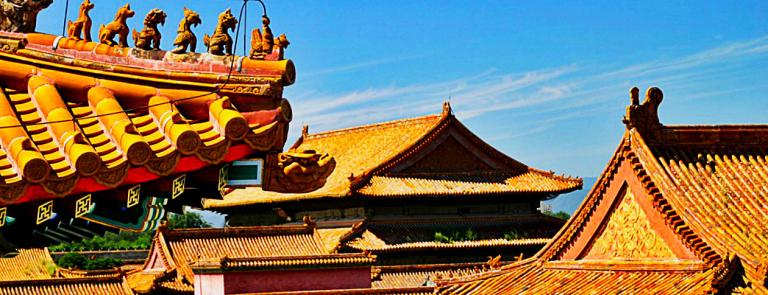
The case cannot be made more strongly that Wuzhen not only cradled its own artists from the Ming period onwards but was also at the heart of China’ smost culturally rich region. Many of its people would have been literate. Theirthirst for literary inspiration would have been fed by these locally nurtured literati. The area continued to inspire poets. In the mid-1600s Pu Songling wrote Strange Tales from a Chinese Studio comprising five hundred tales from history. He worked as a private tutor and was apparently inspired by his visits to southern China. He wrote of immortals, of ghosts who became real women and then chose husbands on account of their character and talent, rather than on account of their family. The criteria on which a husband is best chosen still concern China four hundred years later.
Through historical writing, followed by works of naturalistic style,a new novel form took root in the late 1600s. This genre of reality literature was continued through Cao Xueqin in the first half of the 1700s; he wrote what is commonly referred to as one of the four great classical Chinese novels. The author was well connected socially but lost position during the transition from Emperor Kangxi to Yongzheng. Cao’s family came from the old imperial capital of Nanjing, slightly north of Wuzhen, but they lived in genteel poverty in Beijing. He was another writer with a reputation as an inveterate drinker.
The book Dream of the Red Chamber, sometimes known as The Story of the Stone, is semi-autobiographical reflecting his family’s rise and fall. It observes eighteenth-century life in Chinese society: the cast of characters and their relationships within high society which the then impoverished author could have just been remembered. The cast mirrors that of Trollope one hundred years later in England, although he had no personal memories of exalted social connections to call upon. Both Trollope and Cao, and indeed many others in both societies, sought to portray contemporary reality. They rejected the artificiality’ of earlier writers work.
The central character of his book, Jia Baoyu, is male yet prefers the company of women; his observation that’ women are made of water, men of mud’ is still referred to in China: women are ‘ clean and refreshed’ but men dirty and stinking. Lin Daiyu is another principal character; she is beautiful, well educated, intelligent and, interestingly, born to a Suzhou scholar-official.
Another woman, Xue Baochai, is extremely good-looking and a clever talker so resourceful that not a man in one thousand is a match for her’. The portrayal of women as pure, talented but shackled by burdensome convention was a thoroughly new literary approach.
This is a most significant work. There are various groups which nurture past English authors, such as, indeed, the Trollope Society; however, in China there is a branch of respected intellectual study known as Redology which studies the Red Chamber book alone. Mao Zedong apparently read it five times and thought it should be read by everyone. Phrases in the book reflect the Chinese mastery of vivid analogies; one runs:’ When the tree falls the monkeys will scatter’. Strong female characterisation was the beginning of another literature form. Reading the book, which is twice as long as Tolstoy’s War and Peace, leaves the Western reader not only with an immediate impression of the Chinese society in the 1800s, but also a sense of the similarities between, for example, the English and Chinese societies. The characterisation is similar to that of Trollope; the haughtiness of an Alice Vavasor, the worthlessness of Burgo Fitzgerald or the selfishness of Lizzie Eustace are drawn as vividly as the sensible Xue Baochai, the haughty Miaoyu or the weak-willed Jia Yingchun. In addition to acknowledging the 500-year historical cycle, the writer repeats another Western adage with an Asian twist. Cao refers to wealth not surviving three generations. In England the grandchildren of successful northern industrialists were often brought up withthe admonition of clogs to clogs in three generations. One of Wuzhen’s scribes, Mao Dun, informs his readers of The Shop of the Lin Family that Mr Lin is the third generation to run his shop in Wuzhen. His business fails.
The connections of the Red Chamber with Wuzhen are obviously slight, although the author’s family roots were in the region and the character Lin Daiyu was born there. More importantly it would have formed part of the literary backdrop in which the writers of Wuzhen were nurtured.
Reflecting the need for appropriate conditions to create great art, the nineteenth century was not the richest period for Chinese literature. The terminal decline of the Qing ruling family, civil war and the traumas inflicted on China by European powers and by Japan in particular created difficult times. Social conditions behind the absence or presence of cultural achievement should be borne in mind. In England between 1600 and 1800 there were long periods of Civil War, social discontent and the ascendance of militarism as the English fought the French all over the globe. Although this was the period of Milton and the Enlightenment, social conditions did restrict artistic advance. In neither Oxford nor Cambridge Universities, for example, were any colleges founded during this 200-year period. Difficult social conditions were reflected in a dark period at both those universities. So it was with Chinese literature in the nineteenth century.
In the early twentieth century authors emerged who sought change. They began a literary era when politics, not history, romance, nature or realism, inspired writers. Lu Xun, for example, was born in Shaoxing just to the south of Wuzhen. His family had been pawn brokers, landowners and minor government officials, but fate and time had impoverished them. Confusingly for the Western scholar he is known by several names. In China, it should be noted, there are given names, courtesy names, self-chosen names, literary pseudonyms, regal names for emperors and more recently ‘ Western’ names. With charming alacrity most visiting Chinese scholars at Cambridge University broadcast their Western names even if their Chinese names are easy for the Western tongue.
Some such names have a resonance to their own names; others honour a literary hero, hence a ‘ Hardy’ studied recently in Cambridge, reflecting his devotion to the works of Thomas Hardy. His colleague, Johnson or Jonson, however, had disappointedly heard neither of Ben nor Samuel Johnson but rather had chosen the name because of an admiration for the Johnson & Johnson advertisements for baby powder when growing up in Beijing. Motives behind name selection will vary. At the same time as the approach to names in China being very flexible, names themselves carry far more importance than in the West.
Lu Xun wrote the True Story of Ab Q,a poor peasant seeking to win moral victories in the face of a grim reality. Lu was part of the New Culture Movement which reflected the disillusionment with traditional Chinese culture. Westernculture, particularly its science and democracy, was admired. Lu Xun also wrote A Madman’s Dairy about a character who, as in Gogol’s Diary ofa Madman, sees more clearly than the supposedly sane. The book of short stories is one of three Chinese entries in the 2002 World’s Top Works of Fiction; although the value of securing an entry might be a little diminished by being placed alongside Lawrence Sterne’s overrated work, Tristram Shandy. Lu Xun’s claim is to have been China’s first modern short-story writer. The short story took timeto establish roots in China. In the West Boccaccio and Chaucer had started this particular genre centuries earlier.
Literature was now trying to shape reality. Although Sima Qian in Records oftbe Historian sought to influence through praise of morally upright characters he was primarily telling Chinals story. Cao Xueqin in Dream of the Red Chamber reflected society, and writers like Tao Yuanming recorded the beauty of nature.
It was in this background that Wuzhen’s most eminent writer, Mao Dun, should be considered. He sought to shape the future of his country, arguing that capitalism could not succeed in China’s semi-colonial, semi-feudal society.
He lived from 1896 to 1981 and wrote about those times. The 1911 Xinhai Revolution, rural economic decline, the Japanese invasion, urbanisation, Communism were his subjects.
He was born and raised in Wuzhen, worked as a journalist, wrote novels and joined the Shanghai Communist Party in 1921. Amongst his most famous books is The Shop of the Lin Family. It is simply written. Sentences are short and the words, in translation at least, are simple. He describes the life of hishometown so clearly that it is obvious he writes from direct observation. Life was tough for the local Wuzhen people, particularly during the years of the Japanese invasion. The Japanese occupation of Shanghai was brutal. He writes ofan Anti-Japanese Society and the risks Mr Lin’s daughter runs through wearing clothes of a Japanese style in Wuzhen. The description of bank loans and all pervasive debt shows the town’s economy as fragile. Spring Silkworms is another of his famous stories. The worms, like Mr Lin’s shop, provide only a precarious means to make a living. Debt and usury are everywhere, making people’s lives a misery. Capitalism does not work for the masses. This is the message from another of his famous novels Ziye, or ‘ Midnight’. He sketches seventy characters in low-paid employment but moves them this time from Wuzhen to Shanghai.
The harsh reality of working class life is portrayed.
From 1949 to 1964 he acted first as Mao Zedong’s secretary and then as Minister of Culture. He lost his position but not freedom at the beginning ofthe ‘ Cultural Revolution’. He later held an editor’s job in the 1970s and was chairman for some time of the China Literary Arts Representative Assembly.
Near the end of his life he funded the Mao Dun Literature Prize, awarded every four years; it was first presented in 1982. In China it is considered theequivalent of the Nobel Prize of Literature;a contender for the prize must be a Chinese national and their book to have been published in China. The last awards -there are four or five awarded on each occasion -were made in 2015.
Another contact between Chinese literary progress and Wuzhen can be made through the romantic poet Xu Zhimo. He was a rich, good-looking young man with an eye for beautiful women, which was matched by their eyes for him.
He studied in America and England in the early 1920s. He died in a plane crash aged thirty-four. He wrote delightfully, in a manner akin to Wordsworth, Keats or Shelley. He incorporated Western romantic forms into Chinese poetry. To the immense gratitude of the Cambridge Tourist Board and the local shops, hispoem A Second Farewell to Cambridge’ has been learnt by almost every Chinese schoolchild since 1976. Even in the English translation it reads beautifully.A hundred years after he penned the poem, Cambridge hosts immense numbers of Chinese tourists seeking out the River Cam and the willow trees on its banks which were his muse. His time at the college is commemorated by a boulder of Chinese marble placed near the river on which are carved extracts from his poem.
Xu was born near Wuzhen in Xiashi. Back in China after leaving Cambridge he founded the Crescent Moon Society, which was a part of theNew Culture Movement. The poet did much to spread understanding between readers of Western and Eastern literature. He also wrote in the vernacular style so that his work was accessible and more widely appreciated.
When Xu Zhimo studied at Hangzhou, he enjoyed the company of a classmate, Yu Dafu, who like Mu Xin wrote short stories. From a poor background but financed by state scholarship he studied at what later became Zhejiang University. Life as a student was ended by his expulsion following participation in a student strike. He too wrote in the Sanwen prose style, literally a free style without the formal restrictions of Baibua. His criticism of theChinese government of the 1920s and his open approach to writing about such issues as sex made him a literary celebrity. Where Mao Dun exposed the failings of others, in The Sinking Yu wrote with an undisguised frankness and self-exposure which was a totally new approach to literature. The book tells of a man who struggles emotionally within an imbalanced emotional unstable society. It discusses depression in a manner it took a further hundred years for the West to emulate. His literary candour did not endear him to the Kuomintang Party in the 1930s; he fled to Japan, returned but then was probably executed by the Japanese in 1945. Xu Zhimo and Yu Dafu, while not quite children of Wuzhen, can certainly be claimed as cousins and stand witness to the immense literary richness of this region of China.
Both Xu Zhimo and Lu Xun led lives which reflected their literature, and the quest for personal happiness, regardless of the dictates of society, was justified. Xu Zhimo certainly caused much unhappiness to his first wife, Zhang Youyi,a lady of great character and achievement. They were divorced in 1922.
Xu Zhimo claimed theirs was the first divorce in China. That he caused himself much unhappiness during his second marriage to Lu Xiaoman was no matter within his avant garde social circle because in divorcing and re-marrying he had broken one of the feudal fetters which smothered China. Lu Xun also had an arranged marriage to a lady with bound feet who was illiterate. He remained married, treating his wife kindly, but did write a book called Divorce and had a child by his long-term mistress.
The lives of both Xu Zhimo and Lu Xun reflected their art. They each sought to be literary physicians for society. Sima Qian had long ago sought toapply his literary medicine to the rulers of the Middle Kingdom; these artists sought out a wider audience.
Mu Xin, also born in Wuzhen, is another famous literary son. Like Mao Dun, he is remembered in the town through a museum completed in 2015. Mu is perhaps more of a polymath than Mao Dun, as he was poet, artist, as well as a writer. The museum library is delightfully constructed; one main wall is of glass, the remaining three walls hold books. The wooden floor drops step by step from the entrance wall down to the glass like a cinema. The tiered steps invite visitors to perch and read in much the same way that people do in the bookshops of the well-known Chinese publisher San Lian. The Chinese read inside bookshopsmuch more than do the English. Much of Mu Xin’s work is displayed in the rest of the museum, leaving books of philosophy and literature which Mu acknowledged as key influences upon his work for the library itself.
The Mu Xin library is small and provides a delightful space, separated from the world of tourists milling around outside. It is at the opposite end of the scale to the great academic library of Cambridge University. Its library claims to hold eight million ‘ items’ which matches the weight of 471,000 koala bears, or 47,000giant pandas in Chinese currency. However many pandas are needed to balance the books of Mu Xins library, it can claim its place within that cohort of charmed book-places.
Mu was born in 1927 in Wuzhen, into a wealthy aristocratic family with business interests in Shanghai. Much of his work was destroyed in the’ Cultural Revolution’ when he was imprisoned. He wrote his prison memoirs on minuscule pieces of paper supplied by his guards who thought he wishedto write a confession. Exonerated in 1979, he emigrated to the USA in 1982, from where he returned to Wuzhen late in life. He just saw the museum built in his honour before his death in 2011. The museum also displays Mus paintings.
The style of his work, such as in An Empty Room, is described as blending essay writing, fiction and poetry, and is another example of the flexible Sanwen genre.
His work, like Xu Zhimo’s, was therefore widely accessible. Both his paintings and poems are described as a bridge to classical Chinese, poetic and insightful.
Whatever adjectives the art world’s critics throw towards him, he was a son of Wuzhen. His work is influential.
The fourth twentieth-century writer of note to emerge from this small town is Kong Lingjing,a 76th-generation descendant of the Kong-Confucius(Kong Zi in pinyin) family. He too is honoured there through a memorial hall in the Lingshui Garden. Born in 1904 he graduated from Shanghai University in 1925. He was the younger brother of Mao Dun’s wife. Kong Lingjing wrote Qi Sheng Ji, Qiu Cbuang /i and Fu Sheng /i.
Like the surrounding area of northern Zhejiang, Wuzhen nursed a remarkable number of top quality writers. The stories of Mu Xin or Mao Dun reflect life and leave the reader to draw their own moral conclusions, rather than being led more directly to them in the style of ancient historians. Their contribution was also to move Chinese literature away from classical Chinese Wenyan to Baibua, that is, vernacular Chinese. Literature became more accessible. Latin in the West perhaps once played the equivalent role to classical Chinese, but since Geoffrey Chaucer’s work, written in English during the late 1300s, literature was generally accessible. Perhaps the development of genre painting in the 1600s, particularly in Holland, provides an analogy. These scenes painted of everyday life were immediately accessible without the rigidity associated with the Raphael school. Art could be readily understood, though some might argue that painting accessibility has retreated somewhat in present times.
The millennia-long direct and tangential links between the literati of China and this small water town are at first sight astonishing. From Prince Zhaoming, through the Duke of Kangle to the Jin poet Tao Yuanming and the Ming calligrapher Zhu Zhishan, each were leading figures of cultural influence who came from this area. So it continued up to modern times through Xu Zhimo, Mao Dun and Mu Xin. Some were directly children of Wuzhen, while others must be shared with neighbouring communities of this part of northwest Zhejiang and Jiangsu. This land of plenty, of ‘ Rice and Fish’, could add to those natural advantages the beauty of its mountains and rich landscape which cradles so many streams. This is why Wuzhen can boast such a literary heritage. Where could a more inspiring place be found than Wuzhen from which to tell the ancient story of China, to create a romance, to observe nature, or to withdraw from the fray when fortune’s wheel had turned cruelly.
As in other countries, the story of Chinese writing is one of constant change. In the move to the modern, Wuzhen and its nearby cities have played a key role. Lu Xun the liberal who wished to strengthen the Chinese character through exposing its weaknesses. Xu Zhimo then mixed English poetic metrewith traditional Chinese poetry so beautifully and Mu Xin who challenged tradition’. Mao Dun and Mu Xin then followed with their particular portrayal of realism.
Wuzhen continues to play its part in the twenty-first century in promoting book culture. In China, as in Europe, this is difficult. As three in ten English households hold no books apart perhaps from a thick mail order catalogue, so in 2007 it was reported that forty per cent of Chinese families own less thantwenty books. Such statistics can be challenged but few would argue with their underlying message. Nonetheless Wuzhen hosts the Mao Dun Literature Prize, it has built two libraries recently and it celebrates its literary heroes of Mao Dun, Mu Xin and Kong Lingjing. Wuzhen is playing its part. So too is Cambridge University; it cherishes over 150 libraries.
Wuzhen’s contribution is not, however, confined to literature. Its founders have also sought to support the section of the arts which for many centuriesenjoyed the least prestige, the performing arts. The literati with artists and musicians were at the apex of Chinese society. Those involved with them, however, were not so revered. Storytelling, Pinghua, would certainly have been an important social activity in Wuzhen. It was also part of a strong Chinese dramatic tradition which embraced dance shows, musicals, farces, recitations and pageants. However, plays were not considered to be the equal of literature or poetry so actors were held with little prestige and actresses were usually considered little better than prostitutes. Theatre was certainly enjoyed but almost only as a well-educated person in modern times seeks an hour’s diversion in front of some mindless television programme. The literati could scarcely admit to enjoying the pastime.
The prejudice in China against theatre was mirrored in England. In part this was because the Christian Church generally saw little merit in performance arts since most had their origins in ancient pagan ritual, just as Chinese theatre developed partly from Shamanism. Plays continued of course because, as in China, they were enjoyed. Anyone, literate or not, could enjoy the performingarts whereas only the educated could enjoy literature. The pleasures of an exclusive pastime then as now have a special appeal to some. In consequence literature and popular entertainment were considered mutually exclusive.
Such partiality explains why far fewer ancient Chinese plays have survived than have works of literature and why some of those ancient plays which are known yield no playwright’s name. It is as if the literati’s reputation would suffer through association with a mere play. Indeed it might well have done. Only impoverished unsuccessful scholars were forced to earn a living through such vulgar entertainment as theatre.
Drama rose in popularity under the Song; with the Southern Song capital in Hangzhou drama must have been staged in Wuzhen. The Yuan in the 1300s, surprisingly because the performing arts were simply unknown on the Mongolian Steppes, boosted the popularity of visual arts. Drama fascinated them.
A little earlier in the West, from circa 800, drama also became more popular. The Christian Church sought to spread its message. To embrace this common entertainment to spread Christianity it had ‘ to stoop if it were toconquer’. So the Church put its pride to one side and sponsored plays as an effective medium through which to carry messages from the Bible to a largely illiterate population. Passion Plays in particular, depicting the last moments of Christ’s life at Easter, were popular. The standing of actors, however, did not improve. One additional reason for this was that actors are obliged to travel with their productions. An itinerant lifestyle that kept them beyond the control of a community, as if they were vagabonds, contributed to their unpopularity.
Actors in China and England suffered from low status for several reasons.
Their position changed slightly earlier in China than in England. Under the patronage of the court of Kublai Khan in the late thirteenth century acting as a profession acquired greater respect. In the standard reference work, Golden Age of Chinese Drama, published in 1976, the historian Chung Wen Shih referred to the Yuan period as the Golden Age of Drama. She writes of unsurpassed lyricism and colourful characterisation but emphasises that at such a distance of time and without knowledge of the actors, of the audience or sometimes of the music, a full appreciation hundreds of years later is difficult. It would seem, however, that certain characterisations are timeless. Chung Wen Shih identifies the long-suffering pretty heroine, the scholar-lover, the cunning general, loyal and disloyal servants, corrupt judges from long ago as if they had never left the stage.
The term”Traditional Chinese Theatre’ induces in the Western mind the thought of Peking Opera, Jingiu. However, this style of entertainment did not emerge until the late 1700s,a period during the Qing dynasty of great cultural confidence. It was a combination not only of song, music, acrobatics and dancebut also of traditions from several provinces far distant from Beijing. Each choreographed gesture from actors with deeply informative face-paint carried layers of meaning. In Peking Opera, symbolism and suggestion trump realism.
In China the singing is of particular significance, reflected through the Chinese saying, when due to visit the opera, that they will listen to an operal whereas in the West the similar phrase is more likely to be watch’ or perhaps go to the opera’.
Peking Opera is an amalgam of theatrical traditions from a wide base. Most credit for the origin of Peking Opera is given to the province of Anhui which borders Zhejiang province to the north. The deepest traditions of Chinese theatre therefore ran close by Wuzhen. Anhui opera troupes were very influentialand it was their Huiju operatic style which captivated the Qianlong Emperor for the first time just a couple of years before he dismissed Lord Macartney in such splendid theatrical style. Sadly there is no record of these Englishmen being offered a taste of Chinese theatricals from a stage in Peking.
Although Anhui opera troupes were most influential, nearby Suzhou also contributed to the mould of Peking Opera through its own variant of musicalmelody referred to as Kungu. Its origins go back to the states of Wu and Yuebefore China’s unification. It continues as a distinct art form performed in places such as in Shanghai.
Unsurprisingly, given the literati’s disapproval in the past of theatre, thereare no records of performing arts in ancient Wuzhen. The storyteller, however,would not have been the sole performing artist. Travelling troupes such as those from Anhui would have used the open-air theatres of the town. They might well have been similar to the three which are used in the twenty-first century, known as Poetry Square, the Water Theatre and the Sun Moon Court. There are also innumerable open squares in quaint corners of the old town from which actors interpret their plays. The modern beautifully constructed theatre complex is wonderful, but acting in these open air corners of Wuzhen provides another connection to the past.
Resurrected Wuzhen in addition to its embrace of the Virtual World and Chinas cultural past has developed a speciality in modern theatre. Based around both the town and its new theatre building designed by Artech Architects, Wuzhen hosts an annual theatre festival. It combines invited performances of plays, Young Theatre Artists’ competitions, theatre dialogues and theatreforums. These more learned events take place alongside an outdoor carnival.
The competitions are presently open only to Chinese nationals but it is their declared intention to attract international artists in future years.
The formal theatre spaces and several outdoor areas are co-opted to create an impressive theatrical nexus. Once more driven by Wuzhen’s amanuensis, Chen Xianghong, prominent actors such as Huang Lei with playwrights like Stan Lai and Meng Jinghui have established the festival as a major event in the annual calendar of Chinese theatre since its opening in 2013. The inspiration for its theatre is not confined to China. In 2016 Shakespeare, naturally in the year celebrating his birth, featured strongly with performances of King Lear, The Tempest and Hamlet; The Tempest was performed in Romanian with Chinese and English subtitles. Chekhov’s Cherry Orchard was delivered in Japanese.
The festival aims less at delivering cutting edge theatre, so often unintelligible to the uninitiated, but rather to reflect mainstream Chinese theatre. It also provides acting and directing opportunities for the young as well as fostering exchanges with foreign theatre. Another connection between Cambridge, with its two outstanding theatre companies, and Wuzhen may yet develop. One play The Vilage written by Stan Lai, playwright and festival organiser, was stagedat St. John’s College, Cambridge in February 2017 by the university’s Chinese scholars. The delivery of the play in Chinese and its length of three and a half hours possibly limited its appeal to local people but this is a good start and might develop into a wider dramatic cooperation.
Theatre can once more be enjoyed in Wuzhen. The journalist who visits fleetingly and considers the town to have lost its soul cannot surely have visited during the theatre festival. The place throbs with life then, and also in and outside theatre week. Pausing to think from where the town came in the 1990s, the theatre festival is another significant achievement. Performing arts will certainly have been part of the town’s cultural history since the beginning of time. The festival is like another sensitively restored roof, expertly replaced on top of a Qing period home. It is another piece of Wuzhen’s jigsaw fitting snugly in place. The theatre festival reminds that the presentation of the cultural past through the restored Qing architecture and through its museums of silk, foot binding or money is only half the Wuzhen story. They represent the past. The town is making itself relevant to the future through its embrace of the internet and contemporaneous theatre.
